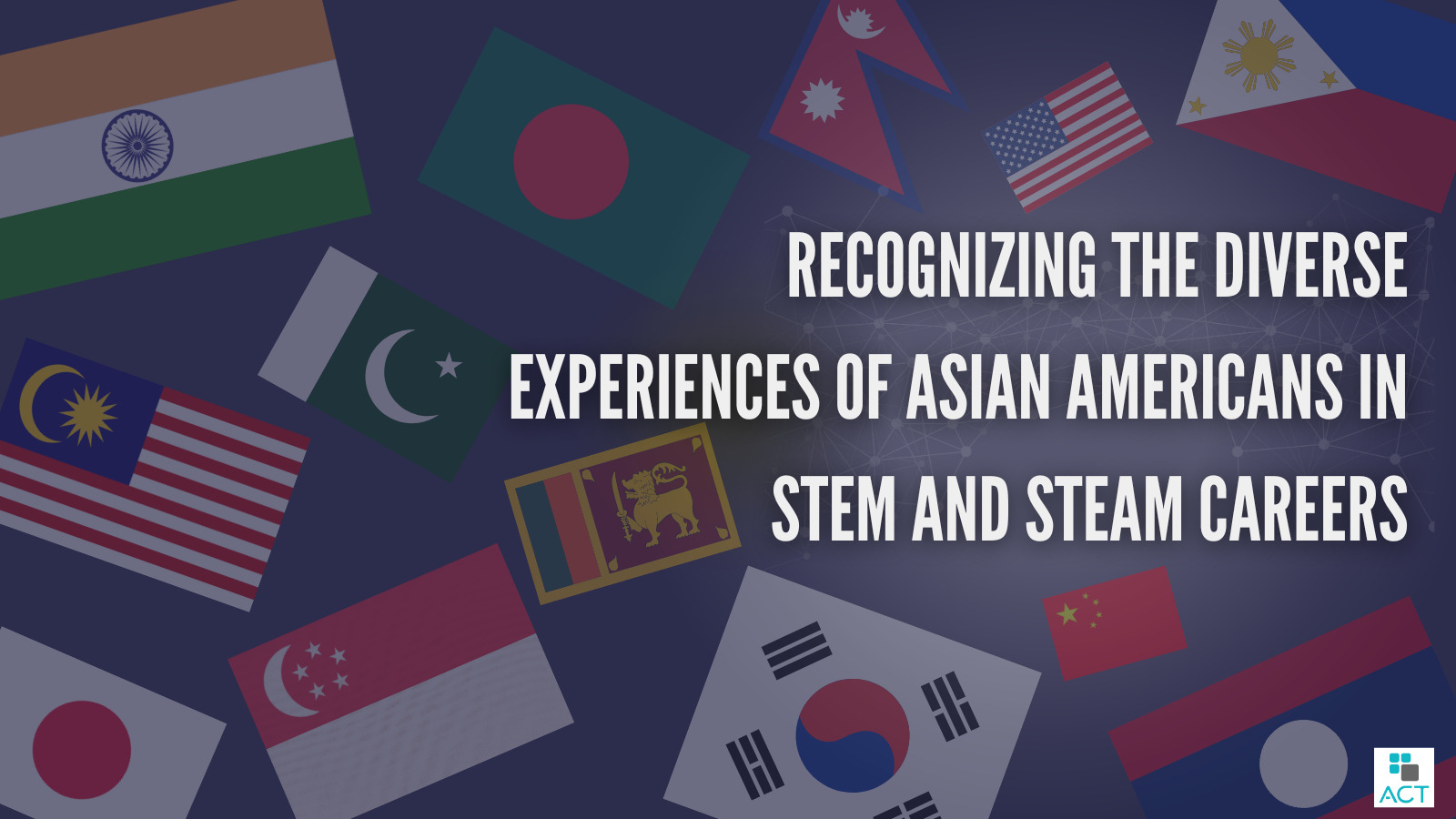Asian Americans are identified as one of the most represented demographics in the science, technology, engineering, and mathematics (STEM) and science, technology, engineering, art, and mathematics (STEAM) workforce. But the term “Asian American” masks the identity, diversity, and disparities of an estimated 24 million people from East Asia, South Asia, Southeast Asia, and even the Pacific Islands. These individuals make up the most economically diverse group in the United States.
One of the most harmful generalizations of Asian Americans is the model minority myth, a mistaken perception that Asian Americans reach a heightened socioeconomic status (i.e., occupation, income, education, etc.) because of their inherent aptitude for academic success. While this perception may seem positive, it is historically rooted in minimizing the cultural and economic experiences of a minority group, including non-Asian minorities, by contrasting them with an “ideal” minority group. Since the model minority myth is most closely tied to high-paying occupations, such as those requiring STEM and STEAM education, inequities faced in these fields by individuals categorized as Asian American workers are routinely oversimplified.
Inclusive Solutions
- Encourage Differences in Your Workforce
Classifying Asian Americans as one monolithic group decreases equal opportunity in the workforce. The idea that all Asian Americans are fairly represented in the STEM and STEAM fields allows employers to overlook the disparities met by some ethnic groups to get to their positions. Employers should motivate potential and current workers to highlight and use their differences as an added skill set to their position. Further diversity of perspective is especially important for innovators who constantly seek to advance their products by broadening their understanding of critical issues and consumer welfare.
A workforce that promotes differences encourages workers to seek leadership positions further. Equal representation in leadership positions paves a critical path to re-structuring workplace equity. Individuals categorized as Asian Americans have the least representation in leadership positions in the workforce today, which strains their efforts to establish worker rights. The harm of underrepresentation is prevalent in times of societal injustices, which most recently involved anti-Asian hate perpetrated by the false narrative connecting Asians to the Covid-19 pandemic. As a result, more than 1 in 3 individuals categorized as Asian American professionals have experienced racial discrimination in the workplace.
- Eliminate Incorrect Biases from your Hiring and Managing Decisions
It is well-known that workplace decisions often unconsciously factor in racial, gender, and ethnic biases. Employers should educate their leadership about incorrect biases that routinely factor into their workplace decisions. One way to train company decision-makers to recognize and avoid unfair assessments of potential and current workers is to consistently seek feedback from workers about their differences and how they impact their experience with their employer and in the broader workforce.
- Implement Solutions to Alleviate Disparities Between Workers
Supporting a diverse workforce includes identifying where minority groups may have unequal opportunities and removing those barriers. For example, individuals categorized as Asian American are provided disproportionately less guidance in the workplace than their other colleagues. This phenomenon can be attributed to the model minority myth that stimulates the misconception that Asian Americans do not need mentorship or assistance in their roles. While it may be true that some ethnic groups emphasize the importance of having specific strong skill sets, employers should not assume an employee’s capabilities based on how they are categorized. Instead, employers should focus on providing practical tools that approach worker disparities and lead to an equal-opportunity workforce.
In Conclusion
ACT | The App Association supports small businesses that leverage their diverse workforce to create products that advance critical markets (i.e., healthcare, security, energy, etc.) and improve every aspect of our daily lives. Investing in a diverse STEM and STEAM workforce means investing in businesses and products that create impressions on a broad range of consumers. Many industries face an increased labor shortage that can be alleviated by introducing a diverse representation in the workforce. Advocating for a workforce that identifies the differences between each ethnic group within the “Asian American” designation is a significant step towards shattering worker inequities and strengthening economies, including the digital economy with which our members operate.
Employers and policymakers must recognize and appreciate the rich diversity of experiences and backgrounds among individuals categorized as Asian Americans in STEM and STEAM careers. By challenging the harmful generalizations, it perpetuates, we pave the way for a more inclusive and equitable workforce.
